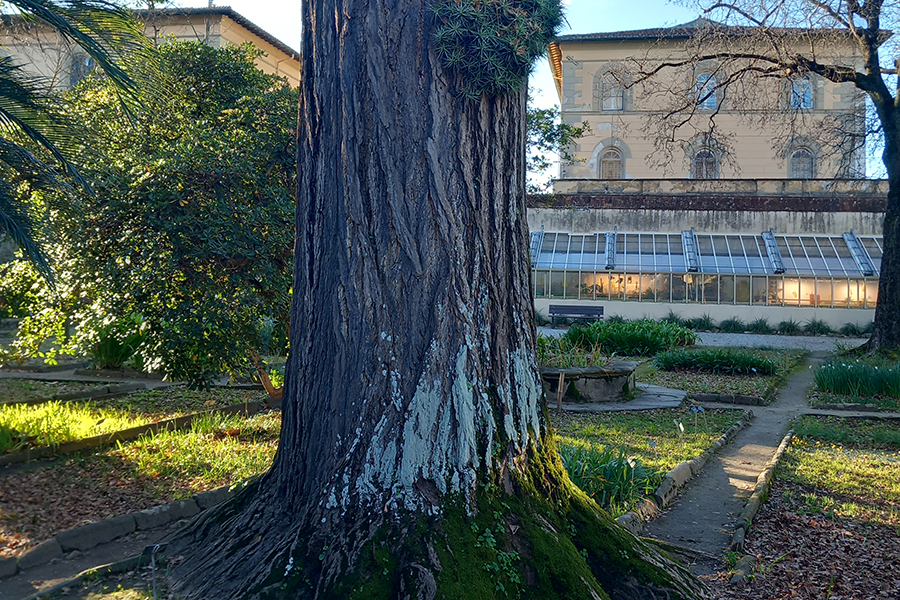Sentinels that monitor air quality, purifying it of heavy metals, are lichens, symbiotic organisms composed of at least two different partners that benefit from each other, in this case a fungus and an alga. In the Botanical Garden of the University of Pisa, just a stone’s throw from the Leaning Tower, a research team from the University of Pisa has found an unusual concentration of these organisms, as many as 57 ‘epiphytic’ lichens, i.e. growing on the bark of trees, plus a non-lichenised fungus. Among them, there are also rare and endangered species, some of which were found for the first time in Tuscany, while the widespread presence of nitrogen-tolerant lichens is probably associated with urban environmental conditions.
The study by the University of Pisa, in collaboration with the Slovak Academy of Sciences, was published in the journal Italian Botanist and started from a three-year degree thesis in Natural and Environmental Sciences conducted by Giorgia Spagli, under the supervision of Professors Luca Paoli and Lorenzo Peruzzi, botanists of the Department of Biology, and the collaboration of Marco D’Antraccoli and Francesco Roma-Marzio, respectively curator of the Botanical Garden and curator of the Botanical Museum Herbarium.
‘In a recent study, it was calculated that in protected areas in Italy one can expect around 59 species of epiphytic lichens per km², while in our case, in an urban context and over an area of only 0.02 km², as many as 57 species were counted,’ says Peruzzi. ’Botanical gardens in urban centres are in fact green islands that offer refuge to various animal and plant organisms, including lichens, which appear spontaneously thanks to the diversity of micro-habitats present and the richness of tree species.

Ginkgo biloba from the Botanical Garden of Pisa conspicuously colonised at the base of the trunk by Diploicia canescens
‘Lichens are among the first colonisers of habitats even if they often go unnoticed,’ adds Paoli, ’and yet the role they play is very important: they are organisms that can, among other things, be used as biomonitors, an inexpensive solution that can supplement traditional survey stations to assess air quality and ecosystems in general.
Among the species found, Arthopyrenia platypyrenia and Coenogonium tavaresianum are new reports for Tuscany. The former is a very small, non-lichenised fungus, little known and little reported at a European level; in Italy, this species was hitherto known only in Calabria. In Pisa, it grows on the bark of a pittosporum (Pittosporum tobira) specimen. Coenogonium tavaresianum typically colonises humid forests on the Tyrrhenian coast, and is an endangered species, but in the Botanical Garden it grows abundantly on the bark of a specimen of California cedar (Calocedrus decurrens). Lecania cyrtellina, finally, is reported for Tuscany only in the Botanical Garden of Pisa, where it grows on the bark of an old Chilean palm specimen (Jubaea chilensis).



